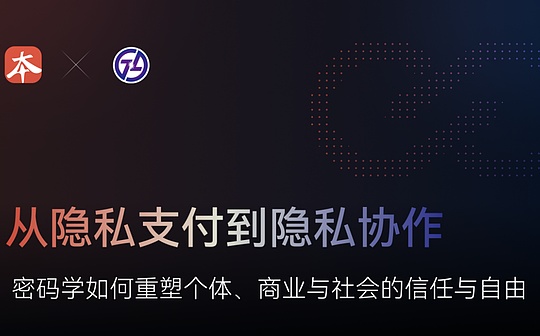
Author: Multicoin Capital, compiled: 0xjs@Bitchain Vision
Jeff Bezos has a famous saying:
“What changes will happen in the next decade? This is a very interesting question and a very common question. But almost no one has asked me: ‘What things will not change in the next decade?’ And I want to tell you,Two questions are actually more important – because you can build a business strategy around things that remain unchanged for a long time. … In our retail business, we know that customers want low-priced items, and I know that they will still be in ten years.That’s it. They want fast delivery and rich choices. It’s hard to imagine that in the future ten years, customers will come and say to me, ‘Jeff, I love Amazon, just hope the price will be higher’, or’I love Amazon, I just hope that delivery will be slower’. This is impossible. So, the efforts we have put in these areas continue to drive the development of these areas, and we know that the energy we invest today will still be ten years later.It will pay off for our customers. When you determine that something is a long-term truth, you can put a lot of energy into it with confidence.”
Earlier this week, we published a typical VC article, which introduced theThe Multicoin investment team is looking forward to new areas in 2025.In line with the spirit of Jeff Bezos’ famous quote, we think it is also necessary to emphasize some trends that we are usually accustomed to but are quietly accumulating and providing a stable foundation for our investment.
Relentless pursuit of capital efficiency
Author: Kyle Samani, Co-founder of Multicoin Capital
DeFi was extremely inefficient in capital when it started.Uniswap’s xyk curve is notorious for its inefficiency in capital.
Over the past five years, DeFi’s capital efficiency has improved in all aspects.Limit order books (CLOBs), revolving/multi-products, centralized liquidity, using pegged dollar stablecoins (USDe) as collateral on derivatives exchanges, using derivatives collateral to promote lending, and using liquidity providers (LPs)Positions are used as derivative collateral and so on.The market will always pursue capital efficiency.
That’s the beauty of DeFi.Licensing-free innovation drives all these improvements in capital efficiency.
We believe that the leading derivatives decentralized exchange (DEX) Drift on Solana represents a form of the logical endpoint of DeFi capital efficiency.Spencer and David talked about these issues in a speech at the 2024 Multicoin Summit.
Endless desire for new financial games
Author: Tushar Jain; Co-founder of Multicoin Capital
Humans always want to gamble, but the form of the game is changing.
Memecoins is a new generation of gambling methods.Memecoins are much more volatile and therefore more fun than traditional casino gambling or sports betting.Memecoins offers a higher rate of return than other forms of gambling, and its extreme volatility brings a level of stimulus and risk that goes beyond traditional casino games or sports betting.Its potential huge returns far outweigh the traditional forms of gambling, which is a huge attraction for those who dare to take risks.This potential for huge gains, coupled with the inherent unpredictability of memecoins, creates an experience that is incomparable to traditional gambling.
memecoins also have a unique social dimension.Tokenizing Internet culture into memecoins provides social elements that other forms of gambling lack.They are often associated with internet culture and online communities, creating a sense of shared experience among gamblers.This social aspect transforms memecoins transactions into a group activity that allows people to communicate with each other based on common interests and experiences.This creates a sense of belonging and shared identity that other forms of gambling do not have.
memecoins represent the convergence of gambling, internet culture and social interaction.They provide a high-risk, high-reward experience that caters to the human thrill-seeking nature, while also taking advantage of the social and group qualities of online communities.With the growing Internet culture, meme coins are likely to continue to occupy a major role in gambling, providing unique and engaging experiences for those willing to take risks.
The human urge to gambling remains unchanged, but the games we play are changing.Memecoins is the next step in this evolution, but not the last step.
Financial market’s pursuit of transparency
Author: Spencer Applebaum, Investment Partner at Multicoin Capital
In the TradFi market, brokers are able to provide zero commission trading for retail clients because high-frequency trading companies such as Citadel Securities, Susquehanna International, and Wolverine Trading are competing to execute these order flows.This is called “Order Flow Payment (PFOF).
These companies are willing to take on these order flows in large quantities at prices close to the mid-price, because by definition, these order flows lack insider information.There is a lot of literature that discusses why order flow payments are good for the world, not a bad thing (although it often has negative implications).
The problem with order flow payment models like Robinhood and E-Trade is the lack of transparency, and auctions are limited to market makers that brokers work with.In addition, there are intermediaries such as clearing houses, exchanges, brokers, etc., all of which charges are collected, which are hidden to end users and are usually included in the bid and offer spread.
Regarding the opacity of order flow payments, the research report states: “Robinhood’s agreement with wholesalers sacrifices price improvement (PI) in exchange for more order flow payments – this is exactly the conflict of interest that US SEC Chairman Gensler is concerned about.…If consumers can easily identify differences in execution quality between different brokers, then this is not a problem in itself. However, these differences cannot be inferred from the current disclosure mechanism.”
The beauty of DeFi is that it compresses settlement, transaction, custody and execution into a single application programming interface (API), and all links are transparent.This brings a natural advantage to DeFi, as the market always values transparency.
Multicoin’s portfolio company DFlow is creating a concept called “conditional liquidity” that only when the front-end application recognizes the receiver as a non-harmful trading party (or the receiver uses an algorithm to get a better price from the market makers.Only in the case of ) can liquidity be obtained.Market makers can provide liquidity on an on-chain limit order book like Phoenix, or on-chain automatic market makers (AMMs) like Orca, providing significant price improvements to retail order flows that lack insider information while avoidingBeing taken advantage of by harmful recipients.
The entire stack is open and transparent, and using conditional liquidity, an order flow payment model can be built on this basis.This model is clever because it combines the advantages of traditional finance and decentralized finance: it can not only segment order flows, provide retail traders with more favorable prices, but also has the openness, transparency andAuditability.
Value capture will always be continuously split and reorganized throughout the system
Author: Shayon Sengupta, Investment Partner at Multicoin Capital
Last year, I published an article on “Value Attention Theory”, in which I described the core breakthrough of cryptocurrencies in consumer applications as the issuance and transaction of license-free assets in any interface and environment (issue-transactions)platform).
In 2024, asset issuance will be concentrated on a few platforms – the most prominent one is pump.fun.These platforms have become the dominant platform for asset issuance, but the key is that asset transactions are conducted elsewhere – through bots in Telegram group chats, aggregators like DexScreener and Birdeye, and sometimes directly in Phantom wallets.conduct.Asset issuance and asset trading are not coupled in one issuance-trading platform, but are split on a series of decentralized platforms.Since the birth of the crypto capital market, the issuance and transaction of assets have been separated.Bitcoin is launched on a crypto-school mailing list called metzdowd.com and is now trading on Nasdaq (via ETF).The tokens launched on ICOBench in 2017 are still traded on major centralized exchanges (CEXs).
So, although pump.fun had an advantage in asset issuance last year, the trading part was dominated by Telegram bots and retail aggregator products—those are new sources of order flow.In the long run, I expect to be able to control the transaction or order flow to be a more profitable business.
For issuance-trading platforms, this is only the initial stage.The venue for asset issuance and trading will be split and reorganized thousands of times on thousands of platforms, because attention on the Internet is not limited to a set of applications – it exists in forums, live video platforms, instant messagingtools and various other interfaces we interact with.
More importantly, I expect these applications to realize more clearly that controlling attention gives you the opportunity to control order flow, which is a very profitable business.Get ready for more consumer applications to embed wallets and transactions in 2025.
Funds are always looking for profits
Author: Eli Qian, Investment Partner, Multicoin Capital
Everyone with funds is looking for a simple and straightforward way to earn money.
Until recently, most sources of income have been reserved only for experienced market participants and investors.For example, if you deposit money into a savings account at Bank of America, you can only get an annualized rate of return of 0.01% (and Bank of America will lend your money out at a 10% interest rate!).Only when you buy money market funds can you get a more reasonable rate of return.But the demand for returns has always existed. Products like trading open-end index funds (ETFs) save the hassle of selecting individual stocks. They also have smart investment advisors that can manage your entire investment portfolio, which makes non-professionalMarket participants are more likely to gain previously limited returns.
There are similar situations in the cryptocurrency field. It is not easy to obtain profits through pledge or borrowing, and users need to have relevant knowledge.Products that simplify the process of obtaining profits will continue to develop, ending this phenomenon of knowledge arbitrage that makes retail users suffer losses.Nowadays, you only need to bring cryptocurrency to your wallet or app, and you can get pledge or borrowing income in a few clicks – an understanding of pledge, lending and other knowledge is not necessary.Products like Fuse wallets, StakeKit can do this.In the future, wallets and DeFi applications will automatically allocate and rebalance assets in verification nodes, lending protocols and liquidity pools to get the best returns for users 24/7.
Innovation reduces banking costs
Author: Vishal Kankani, Investment Partner at Multicoin Capital
In the 15th century, the Medici family led the development of modern banking.At that time, banking business was slow, reliant on entity operations, expensive, and required a high degree of trust.Over time, the cost of accessing financial services has dropped dramatically.With blockchain technology, we clearly see the prospects of achieving all-weather, global, and zero-cost banking business.
No matter how advanced the financial infrastructure becomes, the need for banking will always exist.Banking as a Service (BaaS) emerges because under the framework of the traditional financial system, it is difficult to build basic financial components no matter how innovative the application layer is; naturally, this achieves modularity at the software level, resulting in front-end andBackend separation.Today, the backend part is called BaaS.
BaaS providers license their infrastructure to fintech companies, enabling businesses to launch digital banking, corporate credit cards and lending products with minimal time and cost.These services are provided through application programming interfaces (APIs), BaaS providers allow tech companies to focus on customer experience and unique products, while BaaS providers handle “dry but critical” backend transactions: compliance, risk managementand capital flows.
Assume that before the advent of blockchain, BaaS system included banking infrastructure, KYC/AML compliance, payment processing, card issuance and data aggregation.Although feasible, this system is complex and inefficient because it is still based on the traditional banking infrastructure established in the 1970s (Global Banking Financial Telecommunications Association System SWIFT/Automatic Clearing House ACH), which charges high fees and cannot provide 24-hour service, capitalInefficient and not globally versatile.
Blockchain will disrupt modern BaaS because it represents a fundamental innovation.By using blockchain-based assets and protocols, we can build a new BaaS model that is simpler, cheaper, faster, globalized and more transparent.
The blockchain-based BaaS system might look like this: self-hosted wallets like Squads, on-chain KYC and compliance protocols (such as zkMe), stablecoin payment infrastructure (such as Bridge), and forDeFi protocols for lending (Kamine) and trading (Drift).
The evolution of BaaS to a blockchain-based model is inevitable.As infrastructure matures, we will see blockchain protocols replace every component in today’s BaaS system, creating a streamlined, more efficient and transparent model for financial services.
Multicoin’s portfolio company Squads essentially provides a banking-as-a-service protocol on Solana that allows businesses, individuals and developers to create a secure account for storing value and making programmable transactions.Squads is the first formally verified protocol on Solana that has processed more than $1 billion in stablecoin transactions, and assets protected using the Squads protocol are growing exponentially.We expect Squads to firmly lead the development of BaaS in 2025.
Eliminating friction will increase usage
Author: Matt Shapiro, Partner, Multicoin Capital
When you make things easier by removing costs and friction, people will naturally do it more.Emails have changed the way we communicate.iPhone makes taking photos and recording life easier.Amazon simplifies the process of our online shopping.Social media makes sharing content seamless.
Obviously, the same result will occur if transactions and transfers are made simpler.Stablecoins are likely to trigger one of the most significant financial changes of our time.Being able to transfer money in almost instant settlement around the clock will have far-reaching impact.This will allow the US dollar to penetrate into new markets in a way that Treasury auctions cannot achieve, and enter the hands of real users.This will allow commercial activities to be carried out more efficiently during nights, weekends or holidays.This will reduce working capital needs and significantly reduce the cost and time of cross-border transactions.The supply of stablecoins has reached a new high, and so is the volume of stablecoins trading, and both should accelerate growth as regulation is clear to open the door to the acceptance of stablecoins.
The growth of stablecoins will further promote the concept of open finance.When trading becomes easier, more trading happens.Those holding stablecoins will seek benefits from these assets, and they will tend toward platforms like Kamino and Drift that automatically match lenders and borrowers by reducing friction.Once on-chain, stablecoin holders have access to money market funds like BlackRock’s BUIDL, as well as decentralized exchanges like Drift, Jupiter, Raydium and Uniswap with just a click.As on-chain assets continue to grow, stablecoin holders will undoubtedly have more assets to choose from and participate.Stablecoins are the “Trojan Horse” entering the on-chain economy, and the on-chain economy is expected to develop into a more inclusive and open global financial system.








